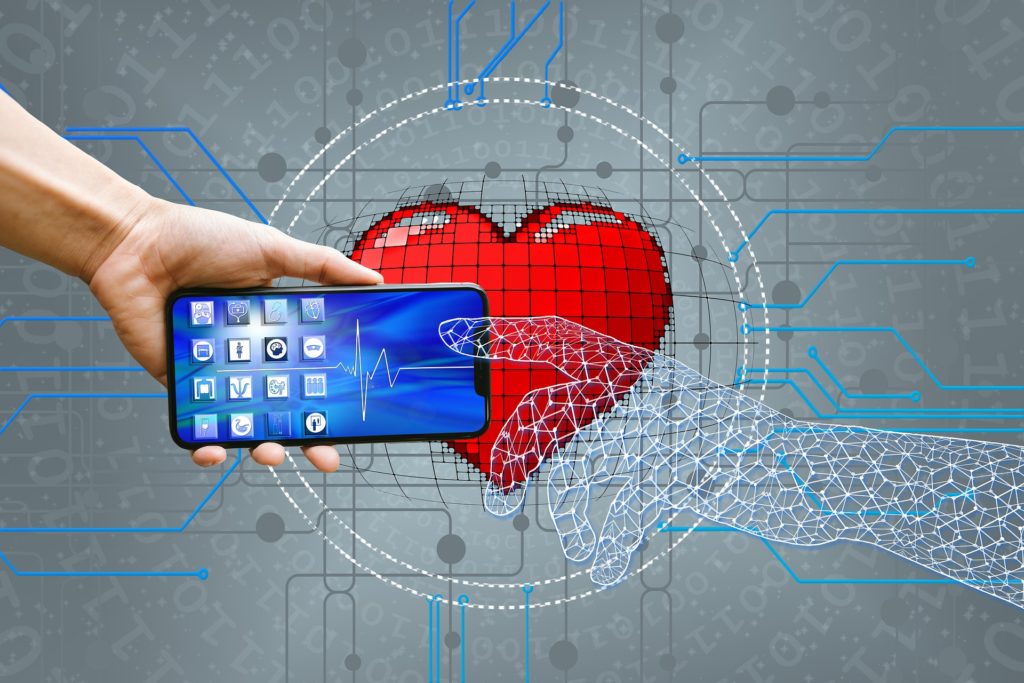As your use of medical software increases, so does the value of your healthcare data. Protecting patient health information (PHI) is now more critical than ever. You should know that great strides have been made to improve the protection of critical data. In this article, we will provide some important tips for maintaining healthcare information security.
Some health providers think changing their electronic health records (EHR) or electronic medical records (EMR) vendor will solve their data security problem, but this solution is less than ideal. It’s not enough to meet HIPAA requirements, either. The high value of patient data makes it a target for hackers, and healthcare practices need to protect their data better through software security and proactive, manual practices.
It may not be easy but securing your healthcare information is critically necessary. To that end, we’ve developed a list of strategies that will help you better maintain healthcare information security and prevent data breaches at your practice.
Control Access to Data
In a recent Cybersecurity Insiders report, we learned that 98% of healthcare organizations are vulnerable to data breaches involving insiders. That’s the highest percentage of insider threats in any industry. Your patient information should only be accessible on a need-to-know basis. It should only be available to a physician or a support staff member briefly. To help maintain security, they shouldn’t be able to access patient data whenever they choose
Another important strategy is properly educating end-users on the security risks related to patient healthcare data. This knowledge will help them act quickly and decisively if a security issue occurs. Patients should be instructed to take similar precautions to ensure the security of their sensitive information, like making sure access to their data is password protected.
Teach Staff How to Recognize Potential Attacks
Your policies and procedures must change to accommodate the digitization of patient records and ensure healthcare information security. Proper staff training is required to make this the new reality in your practice. With data breaches on the rise, proper training will go a long way toward helping your staff avoid security mistakes.
Security awareness training will help your employees recognize potential security threats and make smarter decisions. It will encourage users to employ appropriate caution when handling patient data.
Know Which Devices Your Data Passes Through
In today’s healthcare offices, you’ll find a plethora of laptops, tablets, smartphones, and other devices. With more employees accessing business software using mobile applications, personal devices are becoming the go-to for conducting business. With so many more devices accessing your data, you are also more vulnerable to cyberattacks.
Ask your IT staff to assess the risk of every device that will access your data. Make sure they check personal tablets and smartphones before allowing them entry onto your premises. Those personal devices are far more vulnerable than the devices used exclusively inside your practice.
Instead of digging through your employees’ private information, you should immediately look at the security capabilities of each device accessing your data. There are tools that will help you identify the current inventory of devices on your network. These tools can determine when new devices have been added and give you the ability to monitor devices connected to your network as well as the type of information they are sending.
Employ Endpoint Protection Solutions
Monitoring and controlling every endpoint are crucial for ensuring healthcare data security. One such solution is application whitelisting. This protects all possible endpoints and enables you to implement access control practices that will mitigate threats.
Remember that traditional antivirus solutions are obsolete, so it is advisable to migrate to next-generation antivirus/antimalware solutions that utilize artificial intelligence and deep learning capabilities to detect and kill viruses. You should also integrate this security solution with existing management solutions for better all-around protection.
Secure Wireless Networks and Messaging Systems
Just as more devices make you more vulnerable, so do more wireless connections. If your practice offers free Wi-Fi for patients and a messaging system, your data will be more vulnerable. Their security is often overlooked since they don’t store patient records. If possible,
create automated procedures that update devices and users. This helps ensure that your ex-employees no longer have access and that new technology isn’t left unprotected.
It’s also important to keep your system current with all software updates as they arise. Failure to update your system will expose it to higher risk of being breached. Software updates typically help your system run more smoothly and provide fixes for outdated tools, meaning there are other advantages in addition to better security.
You can also use data encryption to comply with HIPAA standards. Encrypting your health records, medical records and other data while ensuring the security of all devices are critical steps for helping you protect against a breach.
Protect Paper Records
Even if you have the most secure EHR systems in the world, don’t forget or ignore paper record security, which can just as easily lead to a data breach.
Make sure that your staff security training includes caring for paper records. Files should never be left open on the front desk and paper records should never be left out in the open unlocked. Despite your digital data being the most easily accessible by hackers, you can’t forget about securing paper records if you still have them.
Develop an Incident Response Plan
In the event of a data breach, you want to stop information theft as soon as a leak is detected. An incident response plan can prevent an attacker from causing more harm. Developing a quick response architectural framework can trigger predetermined protocols for stopping hackers in their tracks. Teach your employees about the security protocols in place to help them take swift action if a breach occurs.
Add Device Encryption
You can mitigate data breaches even further by having your desktops, laptops and medical software encrypted. Encryption automatically strengthens your cyber security by making it impossible for hackers to crack the code without a key. In the event of an attack, all your important data can be backed up and locked by an encryption code. In a medical facility, patients’ critical information is often targeted by cyber criminals. By securing your data with access-level controls, you ensure only selected people can access it.
Although these strategies will dramatically reduce the likelihood of a data breach, the reality is that owning any type of valuable data comes with inherent risk. Think of it as a continuum of risk — you can do nothing and be at 100% risk, or you can do a lot, and reduce your risk down to around 10% to 15%.
Understanding Security Threats
A data breach occurs when you experience an attack on a server that exposes confidential files and information to a bad actor. Advanced ransomware and malware are the tools used when a hacker gains access to confidential files and folders. Security in healthcare information systems is slowly improving over time. While a simple virus can cause mayhem in a security system, there are other threats you should be aware of. These include:
Phishing
Hackers often execute phishing attacks to obtain a user’s personal data such as their login credentials and credit card numbers. Phishing attacks typically begin with a malicious email sent to the targeted user. As soon as the user opens an email attachment, malware enters the system and hacks personal data.
Ransomware
Ransomware is a significant threat that is disrupting cyberspace. Ransomware attacks typically encrypt the infected files and revoke user access, holding the owner for ransom. Ransomware is widespread in the USA and Europe. It typically infiltrates a network, target database and file servers and can quickly paralyze your entire organization.
Mobile Applications
Mobile applications are emerging rapidly in today’s healthcare environment, often to better support telemedicine and telehealth services. Patients and clinical staff must understand the looming security threats and data theft possibilities on mobile applications. Patients, doctors, and other medical professionals use mobile devices and tablets, which opens the door for hackers to steal sensitive data.
Maintaining Efficiency
One of the main benefits of maintaining healthcare data security is efficiency. A data breach often requires health organizations to switch back to using paper documentation while they try to regain their lost data. The resulting downtime further intensifies this struggle for efficiency. Keeping your data secure helps to maintain your traffic at optimal levels and allows your physicians to treat more patients daily.
Understanding Importance to Patients
Keeping healthcare data secure is critical from the patient perspective. Patients wish to keep their health information confidential for the sake of their privacy and their doctor-patient confidentiality agreements.
Healthcare IT software stores a variety of patient data, including medical information, insurance, addresses, credit cards and other personal information. Patients risk identity theft as hackers steal their information for their own use or sell it on the black market. Ensuring a secure database is the best way to prevent this type of theft from occurring.
Conclusion
Knowing how to properly maintain healthcare information security is critical when it comes to managing your health practice. In a world where data is increasingly more valuable, protecting that data has become equally critical.
- Why Your EASM Strategy Needs More Than Microsoft Defender - August 31, 2025
- Is ‘Decentralized Data Contributor’ the Next Big Role in the AI Economy? - August 7, 2025
- How Your Database’s Semantic Layer Enables AI Analytics - June 6, 2025



